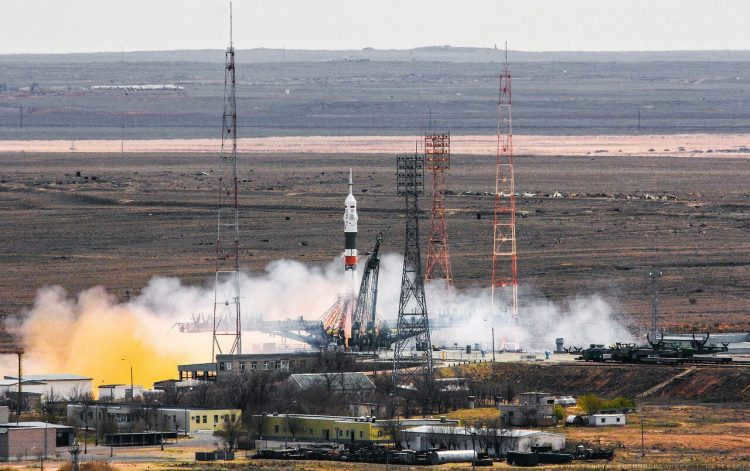The pioneering satellite, a marvel of engineering, design, and scientific ingenuity, was the brainchild of a collective of Soviet Union’s brightest minds. Its designation, befittingly, was “Sputnik-1”.
Although its payload was modest and its time in orbit brief, spanning a mere three months, it etched its name in history, forever illuminating the mysteries of the celestial realm for humanity.
Who invented the first Earth satellite and when was it created? The story behind its creation
The first Earth satellite, known as “Sputnik-1,” was created by Soviet scientists in 1957. Notably, it was the world’s first satellite to be launched into space, predating the American satellite by a year.
Photograph of “Sputnik-1” and an illustration of its components

The Soviet satellite known as “Sputnik-1” was designed using two half-shells made of aluminum that were tightly sealed with 36 bolts. It had a total weight of 83.6 kg.
Among its various components were:
- two antennas;
- an electrochemical unit;
- a thermoregulation system;
- a radio transmitting device;
- pressure and temperature sensors;
- on-board electrical automation;
- a fan.
The development process for this device started in the autumn of 1956, with the first tests being conducted on a vibration test bench and thermal chamber in the late spring of the following year.
Who launched Sputnik-1 in the USSR and when?
“The most basic satellite number 1”.
The Soviet Union took great pride in being the first to successfully launch an artificial satellite into space. The satellite was given the codename “PS-1”, which stood for “the most basic satellite number 1”.
The launch date is officially celebrated as a significant day for the Russian Space Forces, and a plain on Pluto was named in honor of this groundbreaking achievement.
Who was responsible for the launch of the inaugural “Sputnik-1”?
A team of scientists, engineers, and designers collaborated on the development of the spacecraft. Leading the project was S.P. Korolev, a pioneer in practical astronautics and a devoted follower of the theories put forth by K.E. Tsiolkovsky.
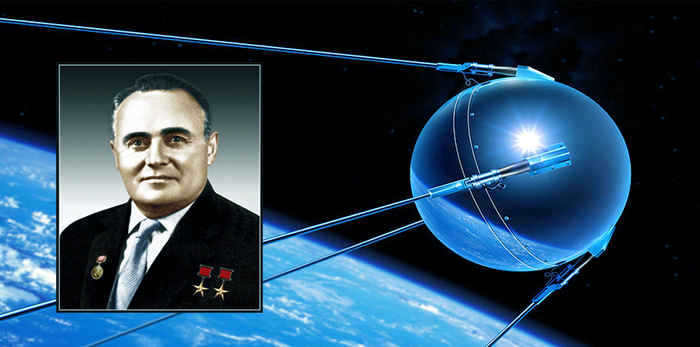
Among the individuals who have made significant contributions are A. V. Bukhtiyarov, M. V. Keldysh, M. K. Tikhonravov, G. Yu. Maximov, V.I. Lapko, and B.S. Chekunov.
The precise launch date was 04.10.1957.
The launch took place on 04.10.1957 at the exact time of (22 h. 28 min. 34 sec.) by MSC. After 495 seconds, the rocket block containing the artificial satellite was in an elliptical orbit.
The first signal was received after the satellite separated from the central block. The signals ceased on 04.01.1958 when the device burned up in the atmosphere.
From where was the launch conducted?
The launch took place from Tyura-Tam using the R-7 intercontinental ballistic missile as a foundation, propelled by a Sputnik carrier rocket.
Subsequently, the testing facility of the USSR Ministry of Defense known as “Tyura-Tam” was rebranded as a cosmodrome with the more recognizable name “Baikonur”.
What was the velocity of the satellite in outer space?
Although there is no available data regarding the velocity of Sputnik-1 online, individuals with technical expertise may attempt to ascertain it through calculations.
It is established that the satellite remained in outer space for a period of 92 days, completing 1440 orbits around planet Earth, which roughly amounts to 60 million kilometers.
Flight Program
The flight program represents the objectives pursued by the USSR space center.
These objectives included:
- Verifying the accuracy of calculations and technical solutions adopted for the launch;
- Determining the density data of the upper atmospheric layers through the spacecraft’s descent braking;
- Investigating the ionospheric passage of radio waves emitted by the satellite’s transmitters;
- Analyzing the conditions necessary for the proper functioning of other aircraft equipment.
Despite lacking modern scientific instruments, the satellite transmitted crucial data for future space exploration via radio signals and optical observations.
Those who are fascinated by space are curious about the current whereabouts of the world’s inaugural satellite. One can marvel at precise replicas (mock-ups) of it at various exhibitions dedicated to outer space or in Space Museums, where informative talks and presentations on this subject are conducted.
The actual Sputnik-1 disintegrated in the atmosphere before it could return to its home soil.
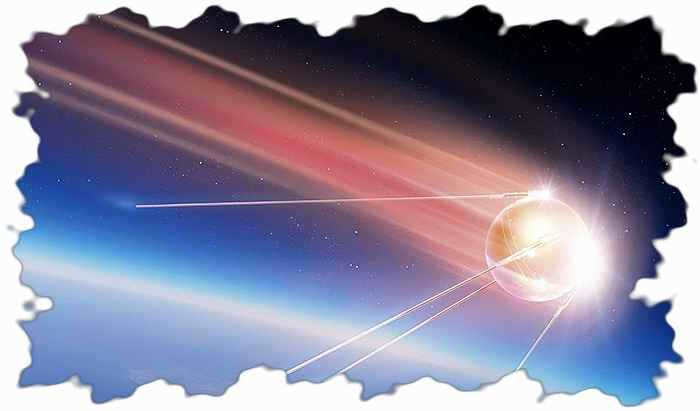
Regrettably, there is no remaining evidence of it. Solely images and photographs have endured.
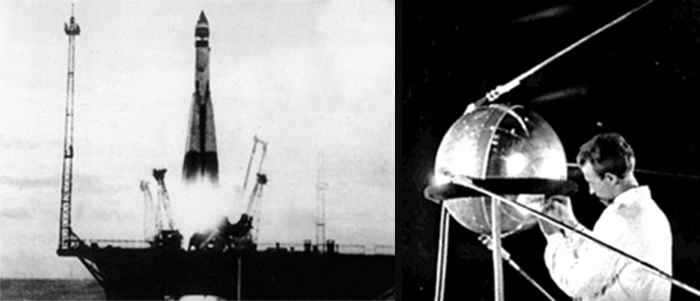
Some interesting information about the initial satellite of Earth
Originally, the trajectory calculations and launch of the device into orbit were performed using electromechanical calculators similar to modern arithmometers. Only in the final stages were the classical calculations of the BESM-1 computer employed.
On the day of the historic launch, the International Congress on Astronautics opened in Barcelona, where Academician L.I. Sedov was in attendance. He informed his colleagues about the groundbreaking event – the launch of the first satellite of Earth – which is why some sources refer to him as the “father of the event”.
The staff of the Space Research Laboratory of the National University of Uzhgorod, established on the same day as the launch of Sputnik-1, were the first to track the trajectory of its flight. The observation started on October 6, 1957, two days after the spacecraft was launched into orbit.
To commemorate this significant occasion, a massive monument called “To the Conquerors of Space” was constructed in Moscow on Prospekt Mira in 1964. Standing at a height of 99 meters, it serves as a tribute to the achievement.
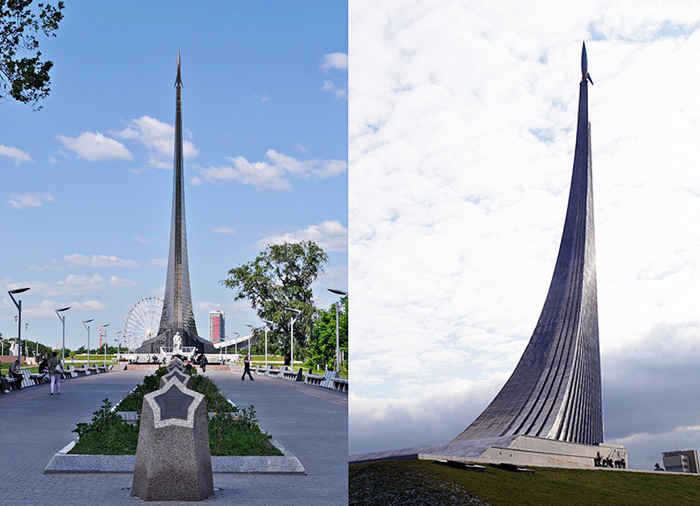
A commemorative statue known as “The First Man-made Satellite” was revealed in 2007 in Korolev, located on Cosmonauts Avenue, to celebrate the 50th anniversary of the historic event.
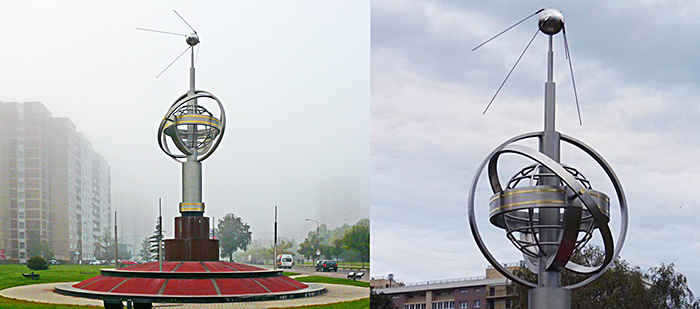
Information from Wikipedia regarding the first satellite’s journey into space
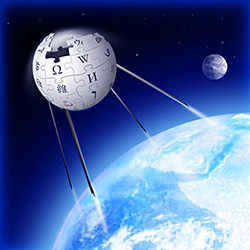
Wikipedia covers a wide range of topics related to the progress, launch, and examination of the data obtained from Sputnik-1, although it may not provide an exhaustive account. For more comprehensive information, it is advisable to refer to additional sources.
Wikipedia also provides a compilation of details about other man-made satellites orbiting the Earth, such as the inaugural American satellite known as Explorer 1.
The launch of Sputnik 1 had a significant impact on various aspects of society, particularly in the fields of science and entertainment. One area that experienced notable changes was the film industry, with several captivating films being produced that explored the theme of space exploration.
One such film is “Taming of the Fire,” which was made by Soviet directors in 1972. This documentary delves into the story of S.P. Korolev and other influential figures who played a crucial role in the development of aviation and rocket technology.
Another noteworthy film is the 1999 American movie “October Sky,” which is based on true events. Directed by Joe Johnston, the film follows the journey of Homer Hickam, the son of a miner, who witnesses the satellite launch alongside other ordinary people. As he grows up, he goes on to design his own functioning rocket.
“Murzilka on the Satellite” is an animated feature from 1960, created by Soviet directors Boris Stepantsev and Evgeny Raikovsky. This cartoon is part of the larger Murzilka’s spetskor series, and it focuses entirely on the theme of space exploration.
The importance of the first satellite for humanity
“Sputnik-1” had a tremendous impact on the human race. Prior to its launch into orbit, people believed that the sky was solid and that there was nothing beyond it. However, Sputnik 1 proved otherwise and served as the first step towards exploring the vast and incredible cosmic space.
What made the event even more important was the fact that the USSR was the mastermind behind the creation of the spacecraft. This achievement garnered international attention, with the event being extensively covered in various media outlets worldwide, thus solidifying the Soviet Union’s strong political influence. The remarkable advancements in Soviet science and technology left people across the globe astonished.
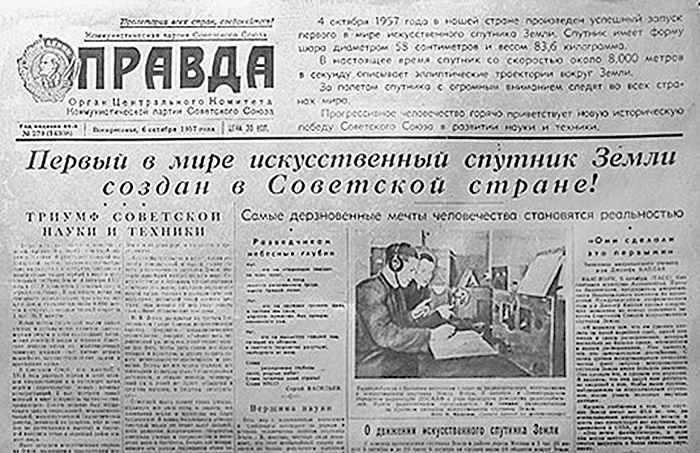
Radio engineers and astronomers conducted observations on the atmospheric friction and its impact on the satellite’s trajectory. This valuable data enabled the calculation of atmospheric density at various orbital altitudes, a task previously hindered by the absence of suitable equipment capable of such measurements. The limited ascent capabilities of aerostats further compounded the challenge.
The findings from the study of Sputnik-1 served as a catalyst for the advancement of the Internet, an indispensable element in the daily life of contemporary individuals.
The successful launch of this artificial vehicle played a crucial role in the development of the ARPANET telecommunications network, which ultimately fell under the purview of the U.S. Department of Defense.
These networks are built on the concepts of Paul Beran, an American engineer-inventor in the realm of computer science, one of the co-founders of the Internet.
To sum up
The breakthrough in science and technology that gave birth to modern technology now appears ludicrous and absurd. But just ponder upon it…
The world’s first artificially created Sputnik-1 from Earth assisted humanity in taking a stride into the futuristic unknown and embarking on the exploration of space. A small device without elaborate equipment managed to evolve into a legend meant to serve the benefit of the Earth’s inhabitants.
“Excuse me, sir! Please pay attention!” – exclaimed a highly enthusiastic schoolboy to his teacher. These young boys managed to intercept the transmissions sent by the very first man-made satellite orbiting the Earth. Since then, numerous satellites have been successfully launched into space, serving a wide range of purposes, including military surveillance, communication, and weather forecasting.
To defy the Earth’s gravitational pull and deploy satellites and spacecraft into orbit, rockets are utilized. The bulk of a rocket’s weight consists of its fuel.
It occurred on October 4, 1957. The astonishing news was broadcasted on the radio and television: an artificial satellite had been successfully launched from our planet into the vastness of space. Skeptics were fortunately able to convince themselves of its existence by picking up the signals transmitted by the satellite as it elegantly revolved around our planet.
Classified Launch
In utmost secrecy, the Baikonur Cosmodrome, situated to the east of the Aral Sea in Kazakhstan, witnessed the launch of a highly confidential satellite. The global community was taken aback – it had been widely assumed that the Soviet Union lagged far behind capitalist nations in terms of technological advancements.
The inaugural satellite was significantly smaller in size compared to contemporary satellites. It possessed a spherical shape with a diameter of approximately 58 centimeters and weighed around 83 kilograms. The dimensions of the satellite were constrained by the capabilities of the rocket responsible for placing it into orbit. However, a mere few weeks later, the Soviet Union successfully deployed a second satellite weighing approximately half a ton. Accompanying this satellite was Laika, a dog who became the first living creature to venture into space. The second satellite boasted enough size to be visible in the sky without the aid of a telescope.
Following their surprise, American scientists embarked on a desperate endeavor to catch up with the Soviet Union. Their initial triumph came in February 1958 with the successful launch of the Explorer 1 satellite. Thus began a fierce competition in the realm of space exploration.
The pioneer to venture into space was none other than Yuri Gagarin, who accomplished the feat of orbiting the Earth on April 12, 1961 aboard the Vostok 1 spacecraft. The United States swiftly responded with John Glenn, who completed three orbits around our planet in February 1962.
The rivalry between these two space superpowers persisted, with each striving to outpace the other in terms of space technology.
The realization of science fiction in real life
The launches of manned spacecraft were met with immense fascination, signaling the fulfillment of concepts previously only imagined by science fiction writers. However, the race to conquer space was not solely driven by curiosity and exploration, but also by the backdrop of the Cold War. This era divided humanity into two factions: those who viewed the United States as a model for progress, and those who saw the Soviet Union in the same light.
The very same rockets used for space missions also held the potential for nuclear warfare. Both the USSR and the US sought to demonstrate their technological superiority, often issuing warnings to one another. Additionally, numerous spy satellites were launched to capture aerial photographs of each other’s territories, transmitting the images back to Earth.
“The populace will communicate with the populace.”
Starting from the top right corner and going counterclockwise: Landsat 4 (images of the Earth); Voyager (automated probes to Mars and Jupiter); Intelsat (communications); Ultraviolet Explorer (space telescope); Space Shuttle; spy satellite; Sicom 2 (first to be placed in a permanent orbit around the Earth).
Nevertheless, satellites have been employed for numerous peaceful purposes. Thanks to their presence, our lives have undergone significant transformations. One of the most well-known applications is the use of communication satellites, which enable us to access television programs from all corners of the globe. Television signals transmitted via radio waves can only be received within a limited range of the transmitter, as they cannot circumnavigate the Earth and venture into outer space. However, if a satellite in space intercepts these signals and then relays them back to Earth, they can travel thousands of kilometers.
Facts and events
- English students studying in a school laboratory in Kettering were among the first to receive signals transmitted by a satellite.
- If a satellite loses its orbit, it will enter the atmosphere and be destroyed. The second satellite launched by the Americans in March 1958, named “Vanguard,” is still in orbit.
- Satellite imagery often surprises scientists. For instance, photos taken from space have revealed that the Earth is slightly flattened at the poles, rather than being perfectly round as previously believed.
- The exploration of space led to the development of numerous new technologies, some of which have found practical applications on Earth. One example is the chemical coating Teflon, which is used to create non-stick pots and pans.
In 1962, the United States successfully launched the pioneering television satellite known as “Telstar 1.” Nowadays, numerous communication satellites play a crucial role in transmitting television programs and telephone conversations across continents, offering significantly reduced interference and distortion compared to terrestrial radios or undersea cables.
Currently, there are hundreds of satellites orbiting the Earth, each equipped with unique capabilities to gather essential information for mankind. A portion of these satellites are dedicated to capturing photographs of the Earth from space, which play a crucial role in environmental studies, the creation of geographical maps, and the exploration of mineral resources. Additionally, meteorological satellites enhance the accuracy of weather forecasts by transmitting data about the movement of air masses in the atmosphere. Navigation satellites also play a vital role, as they assist ships at sea in determining their precise location. Furthermore, astronomical satellites, like the renowned Hubble telescope, provide scientists with an unobstructed view of the universe, unaffected by Earth’s polluted atmosphere.
Settlements in Outer Space
The future of space exploration holds the promise of many fascinating possibilities. It is highly likely that the first colonies in space, where people will live permanently, will be established. Regular spaceflights between these colonies and Earth will transport supplies and support personnel. The launching of the first artificial satellite into orbit less than forty years ago marked the beginning of a new era in human history.
Within just an hour and a half, the first satellite completed its orbit around our planet. It achieved a remarkable speed of 8 kilometers per second. The image depicts the antennas used by the satellite to transmit signals back to Earth.
Verification of calculations and basic technical solutions implemented for the launch; investigation of the ionospheric propagation of radio waves emitted by the satellite’s transmitters; experimental determination of the density of the upper atmosphere through the satellite’s deceleration; examination of the equipment’s operating conditions
with a maximum diameter of 0.58 m.
located 7310 km from the center, at a distance of 939 km from the surface
situated 6586 km from the center, at a depth of 215 km from the surface
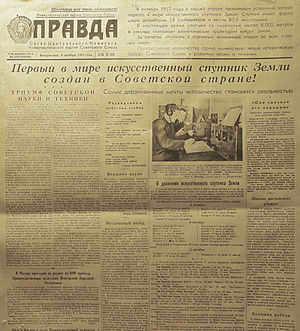
Sputnik-1 – the first man-made satellite to orbit the Earth, was launched by the USSR on October 4, 1957.
The satellite was known by the code name PS-1 (Simplest Sputnik-1). It was launched from the 5th research range of the USSR Ministry of Defense, known as “Tyura-Tam”, which later became the Baikonur Cosmodrome. The launch was carried out using a Sputnik rocket (R-7).
A team of scientists, led by the founder of practical cosmonautics S. P. Korolev, worked on the creation of the artificial satellite. The team included scientists such as M. V. Keldysh, M. K. Tikhonravov, N. S. Lidorenko, V. I. Lapko, B. S. Chekunov, A. V. Bukhtiyarov, and many others.
Flight parameters
- Start of the flight – October 4, 1957 at 19:28:34 GMT
- End of flight – January 4, 1958
- Vehicle mass – 83.6 kg;
- Maximum diameter – 0.58 m.
- Orbital inclination – 65.1°.
- Circulation period – 96.7 min.
- Perigee – 228 km.
- Apogee – 947 km.
- Turns – 1440
Device
The device consisted of a pair of aluminum alloy hemispheres with docking spars that were connected by 36 bolts, ensuring a tight joint. The upper half-shell of the device was equipped with two antennas, each measuring 2.4 meters and 2.9 meters in length. Due to the satellite’s lack of orientation, a four-antenna system was used to provide uniform radiation in all directions.
Inside the sealed enclosure, various components were housed, including an electrochemical source unit, a radio transmitting device, a fan, a thermo relay, a ducting system for thermal control, a switching device for on-board electrical automation, as well as temperature and pressure sensors. Additionally, an on-board cable network was installed. The device had a weight of 83.6 kg.
The Story of Creation
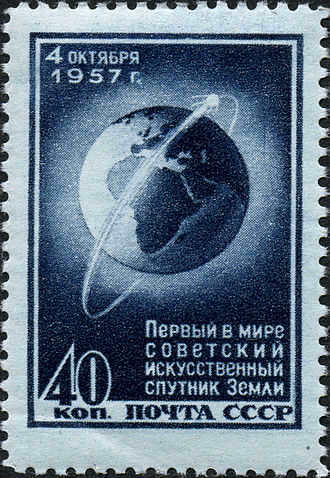
The launch of the initial satellite was preceded by an extensive effort by Soviet rocket engineers led by Sergei Korolev.
1931—1947
In 1931, the Soviet Union established the Jet Propulsion Research Group with the objective of developing rockets. Notable individuals such as Zander, Tikhonravov, Pobedonostsev, and Korolev were part of this group. In 1933, the Jet Institute was created as a successor to the research group, focusing on the advancement and refinement of rocket technology.
1947-1957. From “Fau-2” to “PS-1”.
The story of the First Sputnik is intertwined with the development of rocket technology. Both the Soviet Union and the United States drew inspiration from German origins.
The V-2 rocket incorporated the ideas of brilliant minds such as Konstantin Tsiolkovsky, Hermann Oberth, and Robert Goddard. This groundbreaking guided ballistic missile boasted the following key characteristics:
- Maximum range… 270-300 kilometers
- Initial weight… up to 13,500 kg
- Warhead weight… 1,075 kg
- Fuel components… liquid oxygen and ethyl alcohol
- Engine thrust at launch… 27 tons
An autonomous control system ensured a steady flight during the active phase.
Back then, none of us could have predicted that, collaborating with Korolev, we would become involved in sending the world’s first ISV into space, followed shortly after by the first man.
In 1947, the Soviet Union started working on rocket technology with the flight tests of Fau-2 rockets imported from Germany.
In 1948, the Kapustin Yar test site saw the testing of the R-1 missile, which was a replica of the Fau-2 and produced entirely in the USSR. That same year, the government issued decrees for the development and testing of the R-2 missile with a range of up to 600 km, as well as the design of a missile with a range of up to 3000 km and a head mass of 3 tons. In 1949, the R-1 rockets were utilized for a series of high-altitude launch experiments focused on space exploration. The R-2 rockets underwent testing in 1950 and were officially put into service in 1951.
The development of the R-5 missile, which had a range of 1,200 kilometers, marked a significant departure from the Fau-2 technology. After successful testing in 1953, extensive research was conducted on its potential as a nuclear weapon delivery system. The missile was equipped with atomic bomb automatics and underwent extensive modifications to enhance its reliability. This resulted in the creation of the R-5M, a single-stage medium-range ballistic missile. On February 2, 1956, history was made with the launch of the world’s first nuclear-powered missile.
On February 13, 1953, a historic decree was issued, mandating the development of a cutting-edge two-stage intercontinental ballistic missile (ICBM) with an impressive range of 7-8 thousand kilometers. Initially, the plan was for this missile to be equipped with an atomic bomb, similar in size to the R-5M. However, after the successful testing of a thermonuclear charge on August 12, 1953, it became clear that the task of creating a carrier rocket for such a bomb within the next few years was highly unlikely. Nevertheless, in November of the same year, Korolev gathered his closest deputies for a crucial meeting, where he made the following announcement:
The Minister of Medium Machine Building, also known as Deputy Chairman of the Council of Ministers, Vyacheslav Aleksandrovich Malyshev paid me an unexpected visit. In a decisive manner, he proposed “putting aside the atomic bomb for the intercontinental missile”. He mentioned that the hydrogen bomb engineers assured him that they would be able to decrease its weight and achieve a rocket version weighing 3.5 tons.
– (from the book “The First Space”, p. 15)
In January 1954, a gathering of primary architects occurred, during which the fundamental principles for the arrangement of the rocket and ground launch equipment were formulated. The decision was made to forgo the conventional launch table and instead use suspension on disposable trusses, which allowed for a lighter lower part of the rocket. Additionally, a major change was made to the steering system. The gas-jet rudders, which had been used since the era of Fau-2, were abandoned in favor of twelve steering engines that would also serve as thrust engines for the second stage during the final phase of active flight.

In 1954, a government decree was issued regarding the advancement of a two-stage intercontinental missile called the R-7. Subsequently, on May 27, Korolev submitted a report to the Minister of Defense Industry, D.F. Ustinov, detailing the development of an ISV and the potential for launching it using the future R-7 rocket. The foundation for this report was a series of research projects titled “Studies on the creation of an artificial Earth satellite,” which took place between 1950 and 1953 at NII-4 of the Ministry of Defense under the guidance of M.K. Tikhonravov.
On November 20, 1954, the USSR Council of Ministers gave its approval to the finalized plans for the innovative missile design. In order to meet the tight deadlines, a multitude of tasks had to be accomplished promptly. These tasks encompassed not only the development and manufacture of the missile, but also the identification of a suitable launch site, the construction of launch facilities, and the establishment of all essential services and equipment for observation points along the extensive 7000-kilometer flight trajectory.
The original R-7 missile complex was constructed and tested between 1955 and 1956 at the Leningrad Metal Works. Concurrently, construction of the NIIP-5 near the Tyura-Tam station began as per the government’s decree on February 12, 1955. During the assembly of the first rocket in the factory shop, a delegation of prominent Politburo members, led by Khrushchev, visited the plant. The rocket left a profound impression not only on the Soviet leadership but also on leading scientists.
“We [nuclear engineers] believed we had a considerable scale, but what we witnessed there was something much more significant. We were astounded by the immense technical expertise evident to the naked eye, the synchronized efforts of countless highly skilled individuals, and their seemingly routine yet remarkably professional approach towards the extraordinary tasks they were handling….”
– (comp. “The First Space”, p. 18)
On January 30, 1956, a government decree was signed regarding the establishment and launch of the “D” Object satellite in 1957-1958. This satellite was intended to weigh between 1000 and 1400 kg and carry 200-300 kg of scientific equipment. The responsibility for developing the hardware was given to the USSR Academy of Sciences, while the construction of the satellite was entrusted to OKB-1, and the Ministry of Defense was responsible for the launch. However, by the end of 1956, it became apparent that it would not be possible to create reliable hardware for the satellite within the specified timeframe.
There have been reports [1] indicating that the United States plans to launch an ISR in 1958 in relation to the International Geophysical Year. It is a concern that we may lose our priority. I propose that we replace the complex laboratory with a basic satellite and place it into space instead.
On February 15, this suggestion was given the green light.
The Launch’s Historical Background
In early March 1957, the initial R-7 rocket No. M1-5 was transported to the technical position of the test site, and on May 5 it was brought to launch pad No. 1. Preparations for the launch lasted for a week, and refueling commenced on the eighth day. The launch occurred on May 15 at 19:00 local time. The launch proceeded smoothly, but at the 98th second of the flight, one of the side engines experienced a malfunction. After another 5 seconds, all engines automatically shut down, and the rocket descended 300 km from the launch site. The accident was caused by a fire resulting from depressurization of the high-pressure fuel line. The second rocket, R-7 No. 6L, was prepared with the knowledge gained from the previous experience, but it was unable to be launched at all. On June 10-11, multiple attempts were made to launch it, but in the final moments, the safety automatics were triggered. It was discovered that the incorrect installation of the nitrogen purge valve and freezing of the main oxygen valve were the causes. On July 12, the launch of R-7 rocket No. M1-7 was again unsuccessful; this rocket only flew for 7 kilometers. The cause this time was a short circuit in one of the control system devices, which resulted in a false command to the steering engines, causing the rocket to deviate significantly from its intended path and come to a halt automatically.
Finally, on August 21, 1957, a successful launch was conducted, with rocket No. 8L successfully completing the entire active flight section and reaching its target area – the test site in Kamchatka. Although the rocket’s head part burned up upon entering the dense layers of the atmosphere, TASS reported on August 27 that the USSR had successfully created an intercontinental ballistic missile. On September 7, the second flight of the rocket was also a complete success, but once again, the head part failed to withstand the high temperatures. Despite this setback, Korolev remained focused on preparing for a future space launch.
So, based on the results of flight tests of five rockets, it became evident that they were capable of flying, but the head required significant revision. According to optimistic estimates, this revision would take at least six months. The destruction of the head components cleared the way for the launch of the First Simple Satellite. (…)
With Khrushchev’s approval, S. P. Korolev decided to utilize two rockets for an experimental launch of a basic satellite.
The development of the most basic satellite began in November 1956, and by early September 1957, PS-1 had undergone final testing on a vibration test bench and in a thermal chamber. The satellite was designed to be a very simple vehicle equipped with two radio beacons for trajectory measurements. The transmission range of the basic satellite was deliberately selected to allow radio amateurs to track the satellite.
On October 2nd, Korolev issued an order to conduct flight tests of the PS-1 and sent a notification of readiness to Moscow. Unfortunately, no responsive instructions were received, so Korolev took the initiative and personally prepared the rocket with the satellite for launch.
At 22:28:34 Moscow time on Friday, October 4 (19:28:34 GMT), a successful launch occurred. After 295 seconds, PS-1 and the rocket’s 7.5-ton central unit were placed in an elliptical orbit with an apogee of 947 km and a perigee of 288 km. At 314.5 seconds, the Sputnik separated and transmitted its distinctive signal: “Beep! Beep!” The Sputnik remained visible for 2 minutes at the test site before disappearing over the horizon. The excitement was palpable as people at the cosmodrome poured into the streets, cheering and congratulating the designers and military personnel. And just after the first orbit, a TASS message proudly proclaimed: “…Thanks to the tremendous efforts of research institutes and design bureaus, the world’s first artificial Earth satellite has been created…”
Only after receiving the initial signals from Sputnik did the results of the telemetry data processing become available, revealing that failure was narrowly avoided by a fraction of a second. One of the engines experienced a “delay” in entering the required mode, and any exceeding of the designated time automatically resulted in the cancellation of the launch. The engine managed to enter the mode less than a second before the control time elapsed. However, on the 16th second of the flight, the fuel supply control system malfunctioned, causing the central engine to shut down 1 second earlier than anticipated due to increased kerosene consumption.
It was a close call, but the first space speed was still achieved.
However, success speaks for itself!
A remarkable feat indeed!
The satellite completed its mission for a total of 92 days, concluding on January 4, 1958. During this time, it completed 1440 revolutions around the Earth, covering a distance of approximately 60 million km. The radio transmitters on board remained operational for two weeks following the launch. Eventually, the satellite began to lose speed due to friction with the upper atmosphere, causing it to enter the denser atmosphere and ultimately burn up due to the intense friction with the air.
At that time, it was commonly believed that we could visually observe the satellite illuminated by the sun at night without the need for special optics. However, this notion was incorrect. The reflective surface of the satellite was too small to be seen with the naked eye. In reality, what people were observing was the second stage of the rocket, known as the central block, which entered the same orbit as the satellite. This misconception was widely propagated by the media on multiple occasions.
– B. E. Chertok “Rockets and People” book 2
Importance of the flight
On that particular night, when Sputnik made its debut in the night sky, I gazed upwards and pondered about the predestined fate of the future. That small glimmer, swiftly traversing from one end of the sky to the other, symbolized the destiny of all humanity. I was aware that while the Russians had achieved something remarkable, we would soon follow suit and claim our rightful place in the heavens. That luminous presence in the sky bestowed immortality upon mankind. It was inevitable that the Earth could not serve as our sanctuary indefinitely, as it may eventually succumb to extreme temperatures or freezing conditions. Humanity was destined to attain immortality, and that celestial light above me served as the initial glimpse of this eternal existence.
I commended the Russians for their audacity and foresaw the establishment of NASA by President Eisenhower shortly after these momentous events.
– Ray Bradbury [2]
The satellite held significant political significance and its journey captivated the world’s attention. Its transmitted signal had the potential to be picked up by any radio enthusiast across the globe. The magazine “Radio” even provided detailed instructions in advance on how to receive signals from outer space [3] [4]. This contradicted the prevailing belief that the Soviet Union lagged behind technologically. The launch of the first satellite dealt a major blow to the prestige of the United States. According to the United Press, “Ninety percent of the discussion surrounding artificial satellites has centered on the United States. However, it turned out that one hundred percent of the achievement belonged to Russia…” [5]. The United States didn’t launch its first satellite, Explorer-1, which weighed only a tenth of PS-1, until February 1, 1958, on its second attempt.
Scientific findings from PS-1 mission
- Validation of calculations and fundamental technical decisions made for the mission’s launch;
- Investigation of ionospheric behavior of radio waves emitted by the satellite’s transmitters;
- Experimental determination of upper atmosphere density through satellite deceleration;
- Examination of equipment’s operational conditions.
Despite the complete absence of scientific instruments on the satellite, the analysis of radio signals and optical observations of the orbit yielded significant scientific insights.
Right after the satellite was launched, a group of scientists from the recently founded Kiruna Geophysical Observatory in Sweden (now known as the Swedish Space Physics Institute) [6] took notice of this occurrence. Led by Bengt Hultqvist, they started conducting measurements of the ionosphere’s total electron content using the Faraday effect. These measurements were then carried out in the subsequent satellite missions.
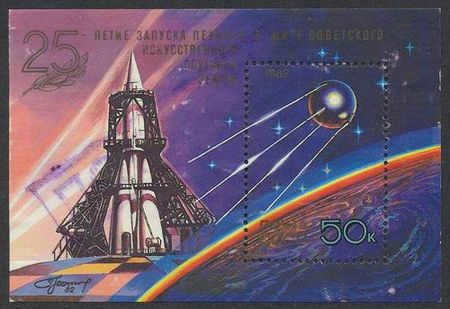
Satellite sounds
The sounds emitted by the satellite were transmitted as telegraphic messages, commonly known as “beeps,” lasting approximately 0.3 seconds. These beeps were generated based on the readings from pressure and temperature sensors, specifically the barorele (with a threshold of 0.35 atm) and thermorele (with thresholds of +50°C and 0°C) respectively. These sensors allowed for simple control over the enclosure’s tightness and the internal temperature of the satellite. [10]
Although there is a recording circulating on the internet claiming to be of Sputnik-1, it is widely regarded as dubious due to its elongated and distorted “bleeps.”
- Initial calculations for the insertion of Sputnik-1 into orbit were carried out using electromechanical counting machines, which were similar in design to arithmometers. Only for the final stages of the calculations was the EMBESM-1 used. (From the memoirs of G. M. Grechko[2])
- The launch day of the first artificial satellite coincided with the commencement of the next international congress on astronautics in Barcelona. Academician Leonid Ivanovich Sedov made a groundbreaking announcement about the successful orbit insertion of Sputnik-1, receiving applause from the audience. Due to the secretive nature of their work, many of the leaders of the Soviet space program remained unknown to the general public. As a result, Leonid Ivanovich became internationally recognized as “the father of Sputnik.” [11]
- The Space Research Laboratory of Uzhgorod National University, established on October 4, 1957, was the first to create a star map showing the flight path of Sputnik-1. Observations of Sputnik began there on October 6, 1957.
- To commemorate the dawn of the space age, a 99-meter tall obelisk called “To the Conquerors of Space” was unveiled in 1964 on Prospekt Mira in Moscow.
- On October 4, 2007, in honor of the 50th anniversary of the launch of Sputnik-1, a monument was erected on Cosmonauts Avenue in the city of Korolev, dedicated to the “First artificial satellite of the Earth.” [12]
Additional Resources
Important Points
- ↑ The United States first announced plans to launch a man-made satellite into Earth’s orbit in December 1948. Then, in 1955, there were reports of their intention to launch an International Satellite Radio (ISR) as part of the International Geophysical Year starting on July 1, 1957. It was officially announced by President Eisenhower in July 1957 that the U.S. was actively preparing to launch a satellite called “Eisenhower’s Moon”.
- ↑ 12 cf. “The First Space”, p. 23
- ↑ V. Vakhnin. “Artificial Earth Satellites (Reference for Amateur Radio Observers)”. “Radio”, 1957, No. 6, pp. 14-17.
- ↑Dates of international space launches and events
- ↑B. Hultquist, “Ramifications of the Initial Satellite Launch,” article in “The First Space Launch,” pp. 236-238.
- ↑V. G. Kurth, “The Beginning Stages of National Astronomy from Space,” in First Space, pp. 239-241.
- ↑V. V. Beletsky, “M. L. Lidov – Scientist and Individual” (Vestnik RAS, vol. 70, pp. 520-525, 2000).
- ↑“The First Satellites.” Chertok B. Rockets and people. Fili. Podlipki. Tyuratam / B. Chertok. – Moscow: Mashinostroenie, 1996.
- ↑Afanasyev I. “Big Space Club” / I. Afanasyev, A. Lavrenov. – RTSoft Publishing House, 2006.
- ↑Chertok B. E. “Rockets and People”. Vol. 2 (ed.1996) p.202-203.
- ↑ “Monument to the First Artificial Earth Satellite”.
Books
- First Space (a collection of articles celebrating the 50th anniversary of the start of the space age) / compiled by O. V. Zakutnya. – Moscow, 2007. – ISBN 978-5-902533-03-0
References
- “Sputnik: A Lesson to Remember,” Los Angeles Times, September 30, 2007- “Moscow was the first to venture into space as a display of military strength in response to U.S. provocation. Fifty years have passed – and history is repeating itself once again” – Matthew Brzezinski.
- “France Commemorates the 50th Anniversary of the First Soviet Satellite Launch,” Izvestia. Ru”, 04.10.07- “A postage stamp has been released to honor the 50th anniversary of the first satellite launch and mankind’s exploration of space”
- A Satellite in lieu of a Bomb. Documentary film produced by the Roscosmos TV studio
- The inaugural satellite documentary in both Russian and English. Produced by the Roscosmos TV studio
- Timeline of Space Exploration and Sputnik diagram by Newsweek
- NASA’s 50th Anniversary of the Space Age & Sputnik – Interactive Media
- Sputnik Program Page by NASA’s Solar System Exploration
- Sputnik Original reports from The Times]
- 1958 Video Newsreel of Russian Exhibition of Sputnik 1
- 50th anniversary of the Earth’s first artificial satellite launch. RIA Novosti Video
- NASA on Sputnik 1
- A joint Russian project of Ground microprocessing information systems SRC “PLANETA” and Space Monitoring Information Support laboratory (IKI RAN) dedicated to the 40th anniversary of Sputnik 1
- Top Ten Sputniks
- Isachenkov, Vladimir. Sputnik at 50: An improvised triumph, USAToday (September 30, 2007). Checked December 3, 2010.
| Sputnik 1 Sputnik-2 Avangard TV3 | |
| Spacecraft launched by a single rocket are separated by a comma (,), launches by a dash ( ). Manned missions are in bold text. Unsuccessful launches are in italics. |
- 1957 in astronautics
- Automatic satellites
- Artificial Earth satellites
- Cosmonautics of the USSR
- Events of October 4
- October 1957
- 1957 in the USSR
- RSC Energia developments
Wikimedia Foundation . 2010 .
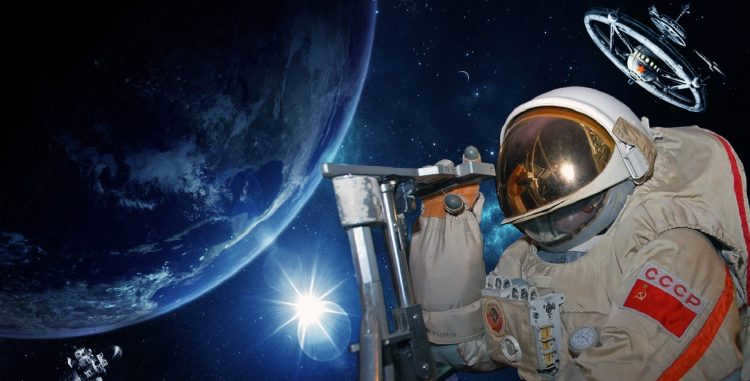
- History of astronomy
The history of space exploration is a remarkable testament to the triumph of human intelligence over stubborn matter in a remarkably short span of time. It has been just over fifty years since the first man-made object defied Earth’s gravity and achieved the necessary velocity to orbit our planet – a mere blip on the historical timeline! The majority of the world’s population can vividly recall a time when a journey to the Moon was seen as nothing more than a fantastical notion, and those who aspired to reach the celestial heights were often dismissed as harmless dreamers.
Nowadays, spacecraft are not only navigating through the vastness of space, effortlessly maneuvering in the absence of significant gravity, but they are also capable of transporting various payloads, astronauts, and even space tourists to Earth’s orbit. Furthermore, the duration of a space journey can be extended indefinitely, as exemplified by the extended stays of Russian cosmonauts on the International Space Station, which can last anywhere from 6 to 7 months.
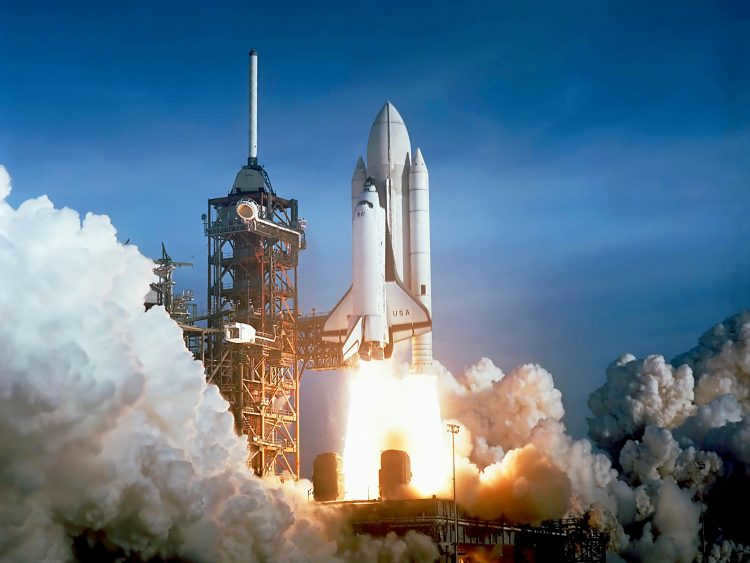
Over the last 50 years, humans have achieved the remarkable feat of landing on the Moon and capturing images of its mysterious far side. They have also delighted Mars, Jupiter, Saturn, and Mercury with the presence of artificial satellites orbiting these planets. Furthermore, the Hubble telescope has allowed humans to visually explore far-off nebulae. Now, there is a serious contemplation about establishing a human colony on Mars.
Reasons for Exploring Outer Space
There are many reasons why we should strive to conquer outer space. While the pursuit of knowledge is a major driving force, there are also other compelling factors:
- Survival. In the event of a catastrophic situation on Earth, humanity may face the threat of extinction. Evacuation to another planet could be our only chance to preserve civilization.
- Mining. It is believed that asteroids contain valuable resources, including rare earth metals. Exploiting these resources in outer space would have significant economic benefits and alleviate resource scarcity on Earth.
- The capacity to face worldwide dangers. Comets and asteroids have now been promoted to this level. Previously, these hypotheses just frightened spectators through TV screens, but the Chebarkul meteorite, which crashed near Chelyabinsk in 2013, demonstrated the immense power of celestial entities.
Phases of space exploration
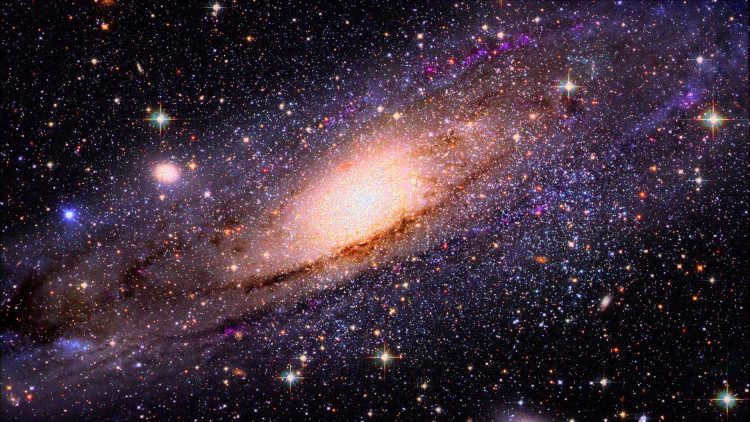
Visions of the cosmos
In the late 1800s, forward-thinking individuals began to embrace the possibility of exploring distant planets. They realized that by achieving a certain velocity to counteract gravity, it would be feasible to venture beyond the Earth’s atmosphere and establish an orbit, much like the Moon’s orbit around the Earth. However, the main obstacle lay in the engines.
During that era, the available engines were either exceedingly powerful but had limited energy output, or they operated on a shaky, unpredictable basis. Furthermore, there was no means of controlling the direction of thrust, which made it impossible to influence the device’s trajectory.
Eventually, in the early 1900s, scientists began to take interest in the rocket motor, a concept that had been understood by humans since ancient times: as fuel is consumed within the rocket, its mass decreases, and the resulting energy propels the rocket forward.
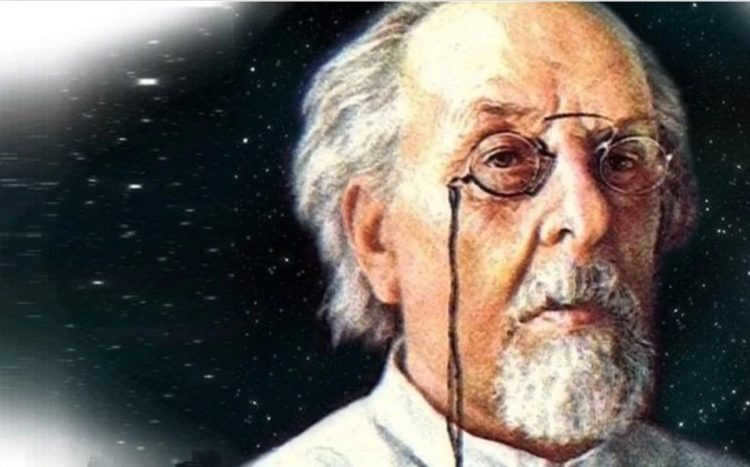
Konstantin Eduardovich Tsiolkovsky
The initial rocket that had the capability to transport an object outside of the gravitational pull of Earth was devised by Konstantin E. Tsiolkovsky. Tsiolkovsky in 1903.
Phase I – the primary liftoff of a spacecraft
The specific day when the expedition into space commenced is recognized as October 4, 1957 – this marks the moment when the Soviet Union, as part of its space initiative, achieved the premiere launch of a spacecraft – Sputnik-1. On that occasion, the spherical satellite successfully entered orbit, transmitting back confirmation of its prosperous liftoff.
Under the guidance of Sergei Korolev, the R-7 rocket was utilized to propel it into orbit. The outline of the R-7, which served as the blueprint for all future space rockets, remains distinguishable today in the state-of-the-art Soyuz launch vehicle. This advanced rocket has effectively launched both cosmonauts and tourists into space, resembling a package with four “legs” and adorned with red nozzles.
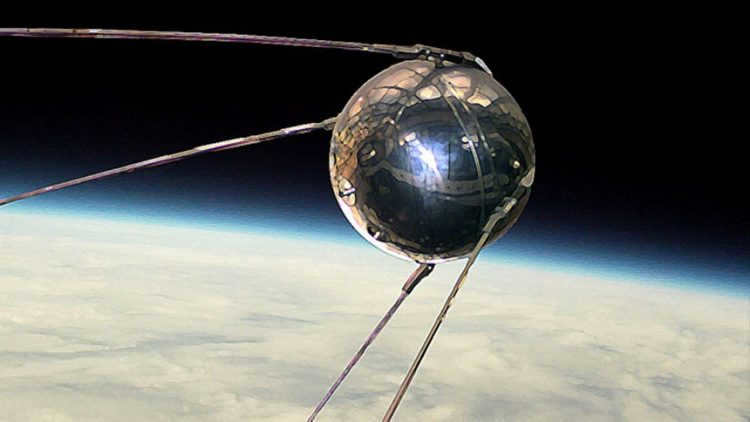
The first satellite in space
The apparatus was made up of two hemispheres made of welded magnesium alloy and four stabilizers, which served as transmitting antennas in parallel. The total weight of the apparatus did not exceed 88.5 kg.
It took 96 minutes to complete a full orbit around the Earth. The “Star life” iron pioneer of space exploration lasted for three months, but during this time it traveled an incredible distance of 60 million kilometers!
Stage II – the initial organisms in space
The success of the inaugural launch served as a source of inspiration for the engineers, and the possibility of launching a living creature into space and bringing it back unharmed no longer appeared to be unattainable. Merely a month after the launch of “Sputnik 1” aboard Earth’s second man-made satellite, the first living being to enter orbit was a dog named Laika. Her objective was noble yet sorrowful – to assess the survivability of organisms in the conditions of space travel. Furthermore, the return of the dog was not part of the plan…
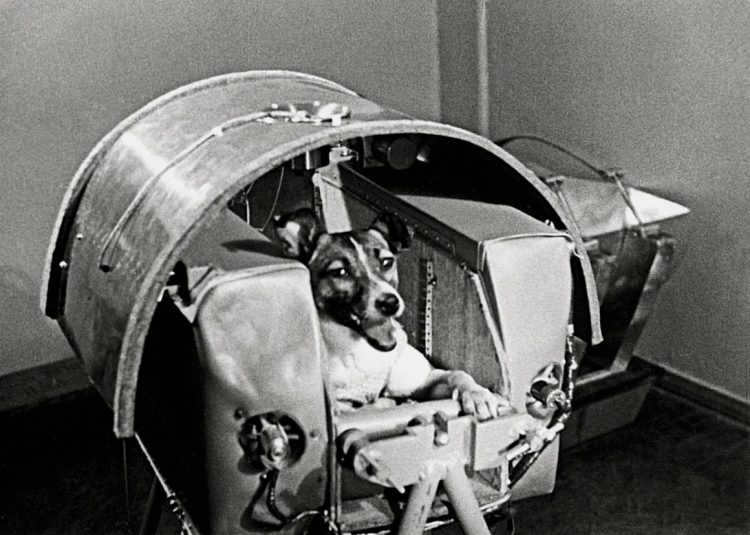
Laika, the first dog to venture into space, tragically perished during the mission. The satellite was successfully launched and placed into orbit, but a miscalculation in temperature control led to a fatal outcome for Laika. The satellite continued to orbit the Earth for four months before losing speed and ultimately burning up in the atmosphere.
Aside from dogs, various other animals including monkeys (macaques, squirrel monkeys, and chimpanzees), cats, turtles, as well as smaller creatures like flies and beetles, have also journeyed into space.
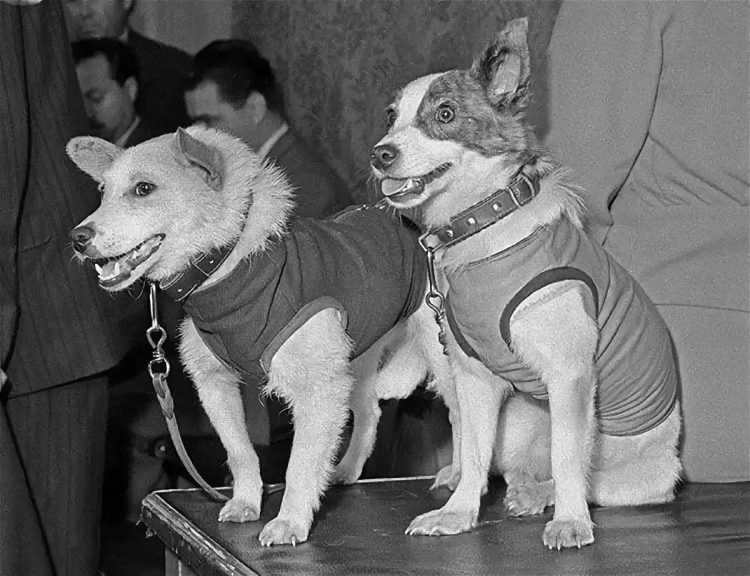
Following the successful launch, the spacecraft underwent finalization and received official approval – a mere 8 months later, the inaugural manned flight would take place using a similar vehicle.
Simultaneously, the Soviet Union accomplished another remarkable feat by launching the first artificial satellite into orbit around the Sun. Additionally, the Luna-2 station achieved a soft landing on the planet’s surface, allowing for the capture of the first-ever photographs of the unseen side of the Moon from Earth.
April 12, 1961 marked a monumental occasion in human history – the inaugural human space flight. Precisely at 9:07 Moscow time, the renowned Vostok-1 spacecraft, carrying the very first cosmonaut, Yuri Gagarin, embarked on its journey from launch pad No. 1 at the illustrious Baikonur Cosmodrome. Yuri Gagarin.
Gagarin, a trailblazer, etched his name in the annals of space exploration as the pioneer who fearlessly ventured into the cosmos and safely returned to Earth, unscathed.
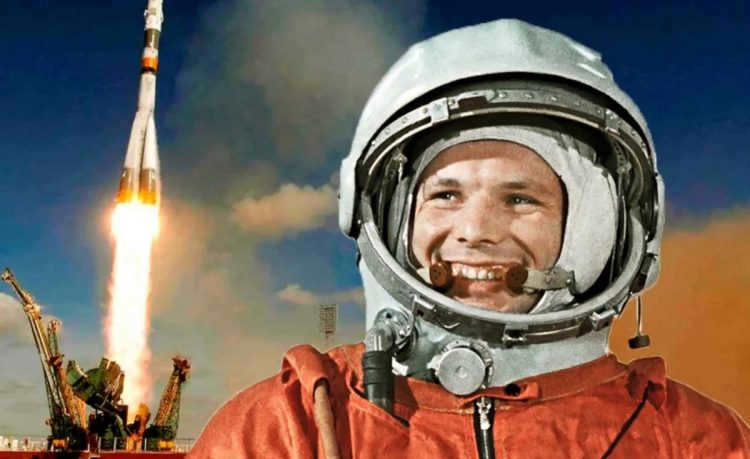
Yuri Gagarin has been honored by having streets named after him in Russian cities and in numerous other countries. The inaugural spaceflight lasted a total of 108 minutes, during which the Vostok spacecraft successfully completed a full orbit around the Earth. Throughout the mission, a variety of essential experiments were conducted, including the first-ever consumption of food and drink, note-taking, and basic arithmetic calculations in outer space. Prior to this groundbreaking event, the sensations and experiences of an astronaut in orbit were largely unknown.
It should be emphasized that the flight conditions Gagarin experienced were far from what space tourists have today. He endured eight to ten times the normal gravitational forces, the spacecraft tumbled at one point, and there were even instances of the hull burning and metal melting behind the portholes. Despite several system failures during the flight, fortunately, the cosmonaut remained unharmed.
Since then, Cosmonautics Day has been celebrated every April 12th.
Following Gagarin’s historic flight, numerous significant milestones in space exploration occurred:
- The world witnessed its first group space flight.
- Shortly after, Valentina Tereshkova became the first woman cosmonaut in 1963.
- Then came the flight of the first spacecraft capable of carrying multiple people.
- Alexei Leonov made history as the pioneer of human spacewalking in 1965.
The dawn of human space exploration
The realm of space has bestowed upon us a multitude of revelations and heroes. However, the inception of the space age was marred by sacrifices. The first individuals to lay down their lives were Virgil Grissom, Edward White, and Roger Chaffee, all American astronauts, who tragically perished on January 27, 1967. The Apollo 1 spacecraft was engulfed in a fire that consumed it in a mere 15 seconds.
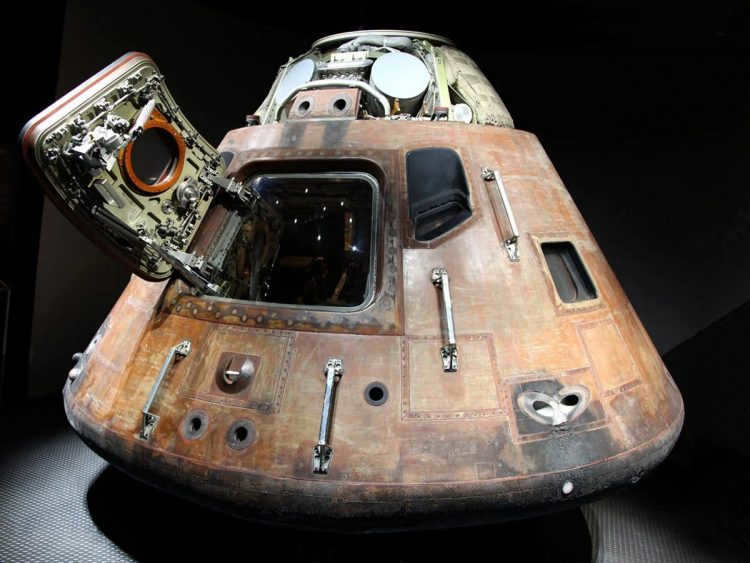
Vladimir Komarov was the first Soviet astronaut to perish. On October 23, 1967, he successfully completed an orbital flight aboard the Soyuz-1 spacecraft and began his descent from orbit. However, the primary parachute of the descent capsule failed to open, causing it to crash into the ground at a speed of 200 km/h and become completely incinerated.
Even though the Soviet Union was the first country to venture into space and the first to send a man into Earth’s orbit, it was the United States that achieved the milestone of successfully landing astronauts on the closest celestial body to our planet – the Moon.
It was on July 24, 1969 that two members of the Apollo 11 crew, Neil Armstrong and Buzz Aldrin, stepped onto the lunar surface. They spent a total of two and a half hours exploring Earth’s satellite before returning to Earth.
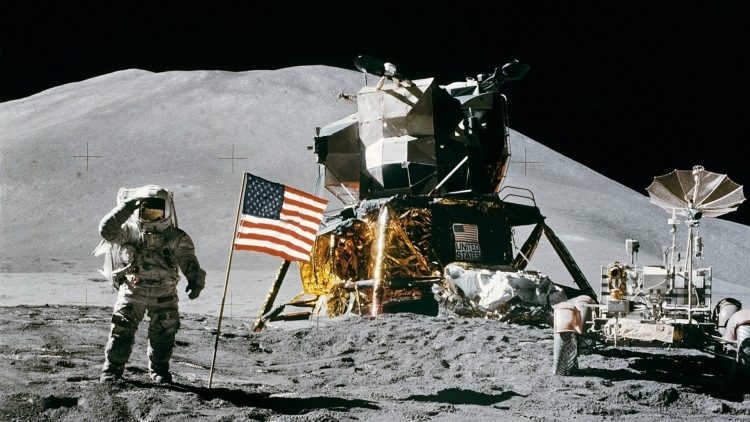
At the time, the famous quote, “It was a small step for a man, but a giant leap for mankind,” was making headlines. Armstrong not only successfully touched down on the lunar surface but also returned with samples of lunar soil.
From 1969 to 1972, the Apollo program carried out a total of 6 missions, all of which involved landing on the Moon. Over the course of those years, a total of 12 individuals had the opportunity to visit Earth’s satellite.
Stage V – exploring the planets of the solar system
“Mars”.
The exploration of Mars by the Soviet program commenced in 1964, and significant progress was made by 1971. The Mars-2 interplanetary station, although it ultimately crashed, marked the first human-made object to reach the surface of the Red Planet.
Shortly after, in the same year, Mars-3 achieved the first-ever successful soft landing. Despite a communication session lasting only 14 seconds, it managed to transmit the first photo from the planet’s surface.
“Venus”
Yet another Soviet project, this time dedicated to exploring the mysteries of Venus; once again, numerous significant accomplishments and breakthroughs were made.
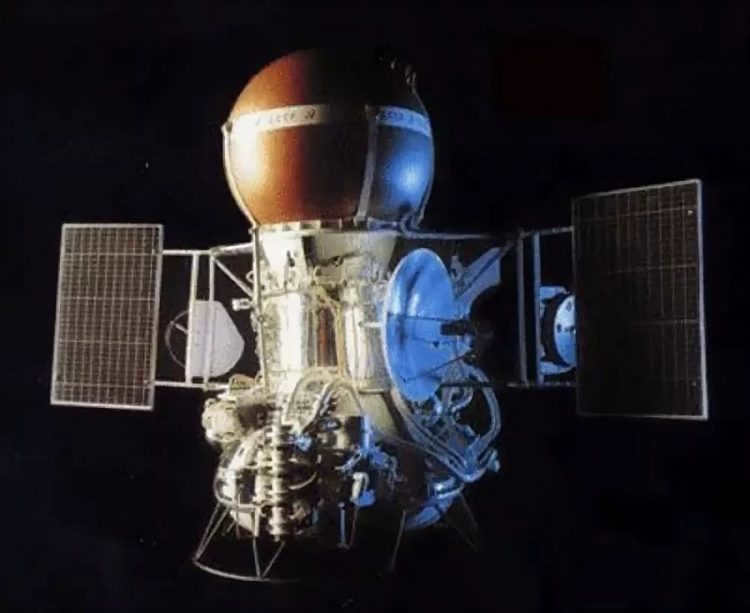
The Venera 9 spacecraft
The Soviet spacecraft discovered that our closest celestial neighbor, Venus, possesses an astonishingly high atmospheric pressure and is vastly different from Earth. This groundbreaking revelation was made in 1970, when the Venera 7 probe achieved the first-ever successful soft landing on Venus’s surface. Five years later, the Venera 9 mission made history once again by transmitting the first-ever photographs taken from the surface of Venus.
Unofficially referred to as the “Soviet” planet, Venus garnered significant attention from the Soviet Union, as they dedicated extensive resources to studying this enigmatic planet, even overshadowing their efforts to explore Mars, which was being pursued by competing nations.
“Viking.”
In 1975, two indistinguishable landers, Viking 1 and Viking 2, were dispatched to Mars with the intention of discovering indications of life in the soil. Despite the absence of life, a successful and gentle touchdown was achieved, resulting in the acquisition of the initial soil samples and panoramic color images from the surface. Originally designed for a 90-day mission, both vehicles far surpassed their expected operational period. For instance, “Viking-1” remained operational for 5 years.
“Explorer”
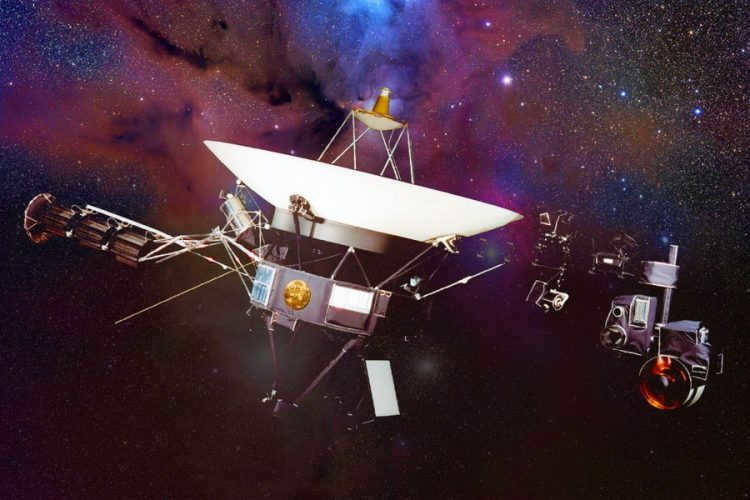
The Voyager 1 spacecraft was part of a NASA mission aimed at exploring the outer planets of our solar system – Jupiter, Saturn, Neptune, Uranus, and Pluto (which was still classified as a planet at that time), along with their respective moons. Both Voyager 1 and Voyager 2 were launched in 1977.
These groundbreaking missions provided us with unprecedented color images of these remote planets and captured the first-ever photographs of their largest moons.
In 1972, a spacecraft named "Pioneer 10" was sent into space, where it successfully flew by Saturn and ventured beyond our solar system. While Pioneer 10 did not provide any groundbreaking discoveries about the extraterrestrial world, it served as evidence that humans were capable of exploring other star systems.
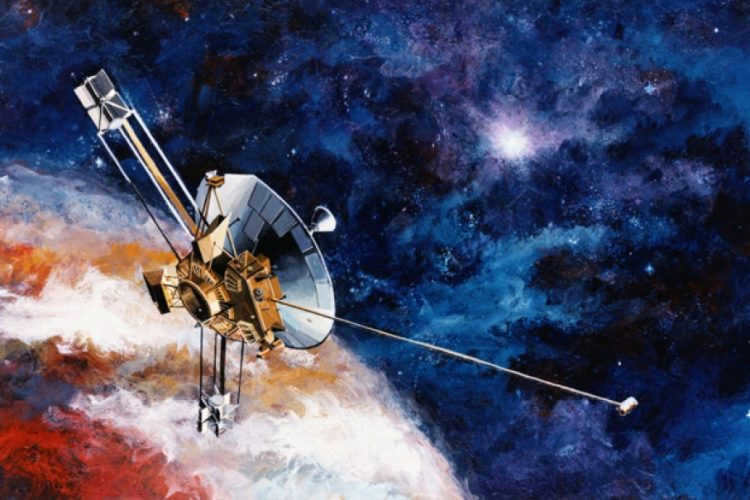
In 1977, the Voyager 1 spacecraft embarked on an exciting mission to explore the outer reaches of our solar system. After its successful exploration of Jupiter and Saturn, Voyager 1 ventured even further to discover the mysteries of the Kuiper belt and the heliospheric boundary.
Remarkably, Voyager 1 holds the record for being the fastest spacecraft to ever leave the solar system. It is also the farthest man-made object from Earth, a testament to human ingenuity and scientific exploration.
If you’re curious about Voyager 1’s current whereabouts, its distance from Earth and the Sun, its speed, and the condition of its scientific equipment, you can find all these fascinating details in real time on the NASA website.
Among Voyager 1’s intriguing features is a special case containing a golden plate, which serves as a message to potential extraterrestrial beings. The plate includes information about Earth’s location and a collection of images and sounds that represent our planet and its inhabitants.
Stage VII – the commencement of global integrated space exploration
Commencement of the reusable spacecraft Columbia
In 1981, NASA initiates the launch of a reusable spacecraft known as Columbia, which has been operational for more than two decades and has successfully completed nearly thirty missions into the vastness of outer space. This remarkable feat has yielded invaluable knowledge for humanity. The retirement of the Columbia shuttle occurs in 2003, making room for more advanced spacecraft.
The inauguration of the Mir space station
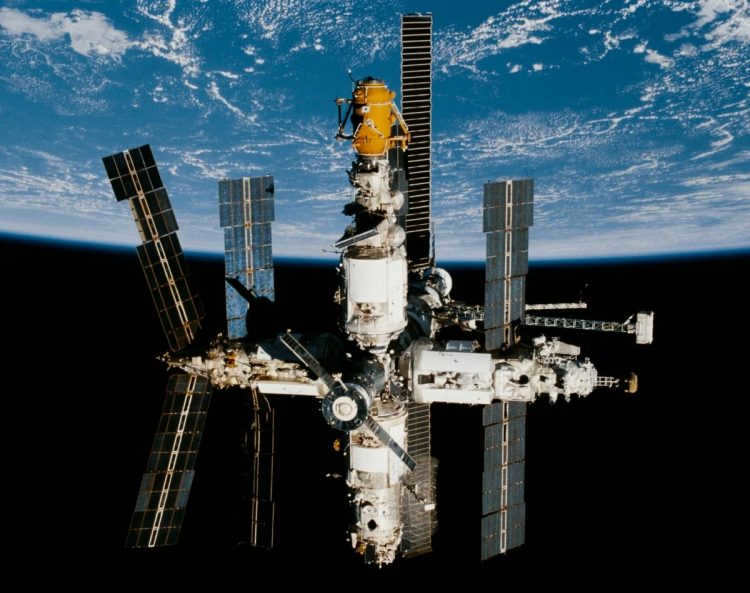
In 1986, the Soviet Union sent the main module of the Mir space station into orbit around Earth. The station quickly became an iconic symbol of the time. Over a span of 12 years, the Mir station housed a continuous “community” of astronauts. Valery Polyakov holds the record for the longest stay on Mir, spending 437 days in space. During its operation, the station conducted 23,000 experiments and collected a wealth of information about the vastness of interplanetary space.
Commencement of the Hubble Telescope
The Hubble Telescope was propelled into the vastness of space back in the year 1990 and instantly became humanity’s visual gateway. Positioned in orbit, this extraordinary telescope ventured into uncharted territories, revealing breathtaking cosmic wonders that were previously unimaginable.
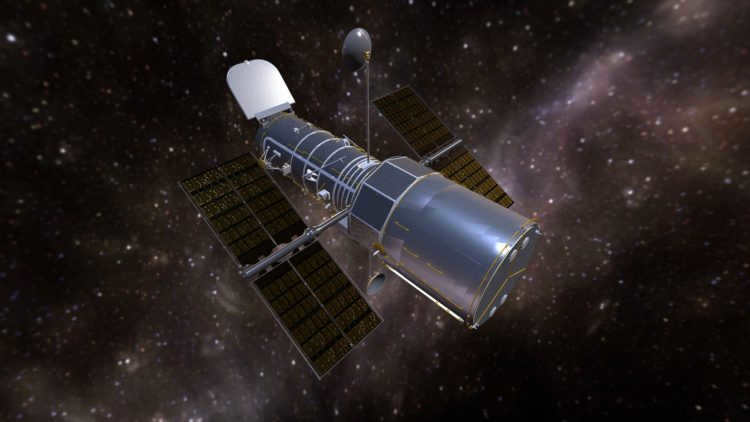
The “Hubble” space telescope has been able to capture a staggering 1.022 million images of various celestial objects such as stars, nebulae, galaxies, and planets during its 15 years of operation in Earth’s orbit. The total amount of data collected throughout its entire lifespan amounts to approximately 50 terabytes. Over 3900 astronomers have had the privilege of utilizing this incredible tool for their observations, resulting in the publication of about 4000 scientific articles.
Remarkably, each year, at least 10% of the works listed among the top 200 most cited articles are based on the invaluable materials provided by the “Hubble” telescope.
"Sojourner" was the pioneering rover that accomplished the historic feat of successfully landing on the Red Planet. It made its descent to the surface of Mars on July 4, 1997, as part of a descent vehicle.
The term "Sojourner" itself conveys the meaning of being a temporary resident or a passerby. The original plan was for the rover to operate on the Martian surface for a span of 7 sols (a sol being equivalent to a Martian day, consisting of 24 hours and 40 minutes). However, it surpassed expectations by continuing its operations for a remarkable 83 sols, until the descent station, which acted as a communication relay, ceased to function. During its active mission, Sojourner covered an approximate distance of 100 meters before communications were lost.
Since then, the whereabouts of Sojourner have remained unknown.
Phase VIII – the start of ISS (International Space Station) operations
In the year 1998, the International Space Station was introduced as a replacement for Mir. The ISS is approximately 5 times bigger than its predecessor and continues to function as a space “dacha” for humanity till now.
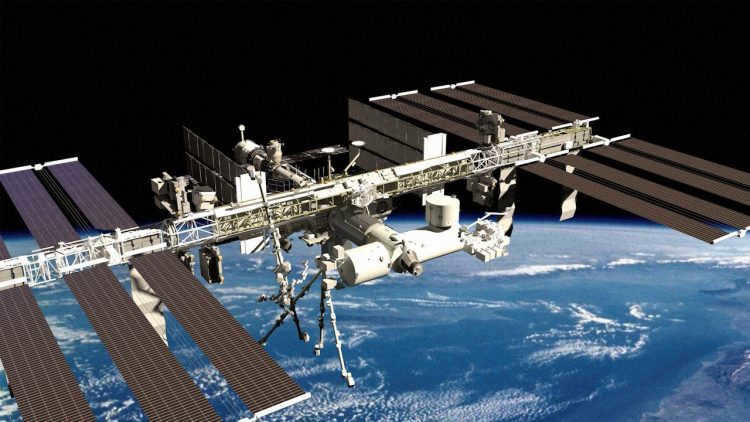
One of the primary objectives in the establishment of the station is the ability to conduct a wide range of experiments that necessitate the unique conditions found in space, including weightlessness, vacuum, and microgravity.
A total of 14 nations are participating in the ISS project.
The ISS is operated with the Russian segment being controlled from the Space Flight Control Center in Korolev and the American segment being controlled from the Lyndon Johnson Mission Control Center in Houston. Control of the laboratory modules, European Columbus and Japanese Kibo, is maintained by the Control Centers of the European Space Agency and the Japan Aerospace Exploration Agency. There is a continual exchange of information between these centers.
Phase IX – Intensive exploration and commercialization of the cosmos
The start of the twenty-first century is characterized by a heightened focus on exploring the vastness of space. Efforts to understand and utilize the International Space Station persist, while scientists meticulously examine and interpret the captivating imagery captured by the Hubble telescope. The unearthing of novel cosmic phenomena and entities never ceases to amaze.
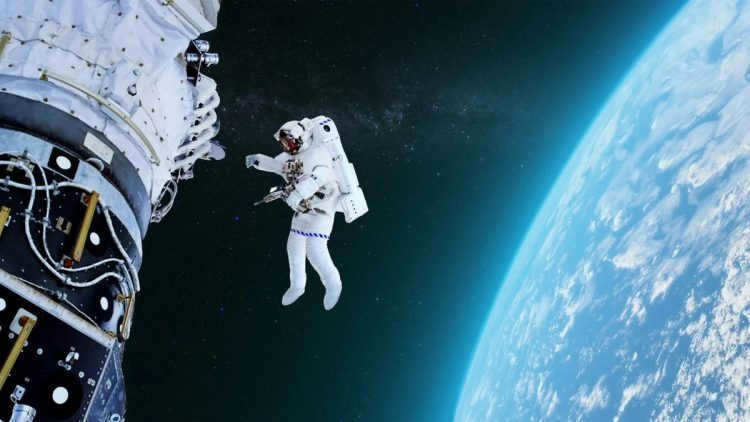
The exploration of our solar system continues:
- On June 24, 2000, the NEAR Shoemaker spacecraft became the first man-made satellite to orbit an asteroid (433 Eros).
- On June 30, 2004, the Cassini spacecraft became the first man-made satellite to orbit Saturn.
- On January 15, 2006, the Stardust spacecraft returned samples from the comet Wild 2 to Earth.
- On March 17, 2011, the Messenger spacecraft became the first man-made satellite to orbit Mercury.
“Exploring New Territories.”
The NASA’s New Frontiers program launched the automated interplanetary station “New Horizons” in 2006 with the aim of investigating Pluto and other celestial bodies in the Kuiper Belt. This belt, situated on the outer fringes of the solar system, is akin to the asteroid belt between Mars and Jupiter, albeit consisting of dwarf planets like Pluto. Moreover, the New Horizons spacecraft holds the record for being the fastest in history.
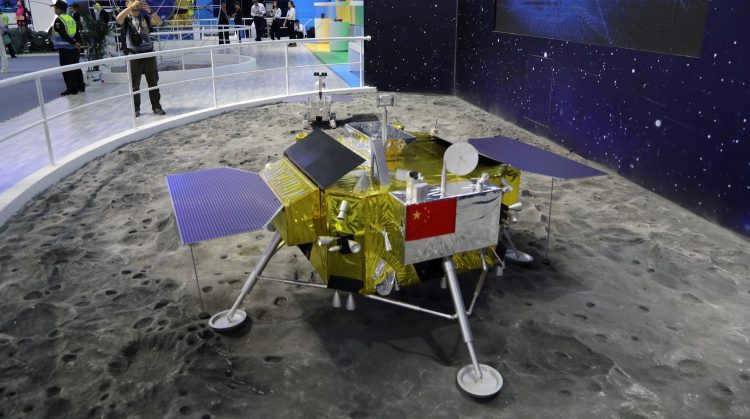
In 2019, the Chinese interplanetary station "Chang’e-4" achieved a groundbreaking feat by successfully landing on the far side of the Moon. This historic mission also included the testing of a new communication system and a significant scientific milestone: the growth of cotton seeds on an Earth satellite for the very first time. These seeds, along with various other crops, were carefully enclosed in a special container to explore the potential of creating a self-sustaining biosphere.
Exploration of the commercial sector in space
Space has become an essential aspect of human existence. Alongside the practical benefits of space exploration, there is also a growing commercial dimension.
Private space enterprises include:
- SpaceX (founded in 2002) and its spaceport
- Blue Origin – established in 2000
- Virgin Orbit – a company created by Virgin Group in 2017. They are currently preparing for an air-launch project[1]
- Scaled Composites’ SpaceShip suborbital spacecraft: SpaceShipOne – the world’s first private spacecraft; SpaceShipTwo – a tourist suborbital spacecraft, a further development of SpaceShipOne
- Interstellar Technologies – Japan’s inaugural private spaceflight firm; established in 2003
- S7 Space is a Russian company primarily focused on launching space rockets and deploying space objects into orbit
- Since 2005, private space centers have been built in the USA (Mojave), UAE (Ras Alm Khaimah), and Singapore.
- The Virgin Galactic Corporation (USA) has plans to offer space cruises to seven thousand tourists at an affordable price of 200 thousand dollars.
- Robert Bigelow, a well-known space entrepreneur and owner of the Budget Suites of America hotel chain, has announced the project for the first orbital Skywalker hotel.
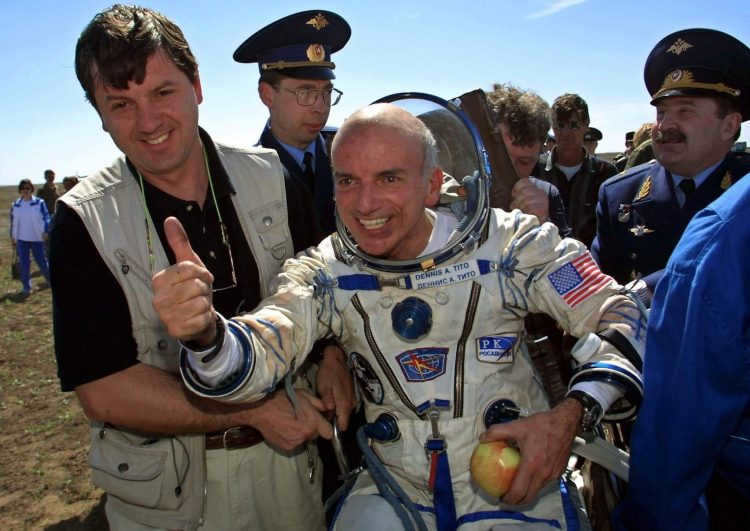
Dennis Tito, a space tourist, made history on April 28, 2001, when he became the first-ever paying passenger to travel to space. He paid a reported $20 million for his 7-day trip aboard the Russian spacecraft Soyuz TM-32, which was organized by Space Adventures in partnership with Roscosmos Corporation.
Now, for a jaw-dropping $35 billion, Space Adventures is offering an exclusive opportunity to embark on a space journey that lasts up to 10 days. This once-in-a-lifetime experience will take you beyond the boundaries of Earth and into the vastness of outer space. If you’re willing to add another $3 billion to the price tag, you can even venture further into the cosmos.
Elon Musk’s Ambitious Plans to Colonize Mars
SpaceX, a private company established by Elon Musk, has set its sights on the audacious goal of colonizing Mars. While the successful return and landing of the Falcon first stage, as well as the launch of a car towards Mars, are noteworthy achievements, the most significant impact of SpaceX’s endeavors has been the revival of public interest in space. Musk, in collaboration with SpaceX, has reignited a collective dream within humanity.
The present era is defined by innovative projects and ambitious plans for space exploration.
10 fascinating facts about space exploration
- The pioneers of modern astronautics – a “persona non grata” and an SS officer.Wernher von Braun – a German, and since the late 1940s – an American designer of rocket and space technology. In the United States, he is hailed as the “founder” of the American space program. He surrendered to American forces in 1945 in Germany, after which he began working for the United States. In Nazi Germany, he was a member of the National Socialist Party and held the rank of an SS Sturmbannführer.
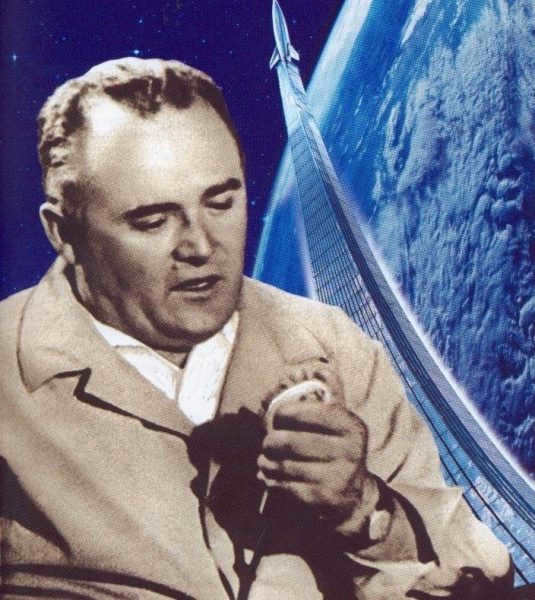
Sergey Pavlovich Korolev
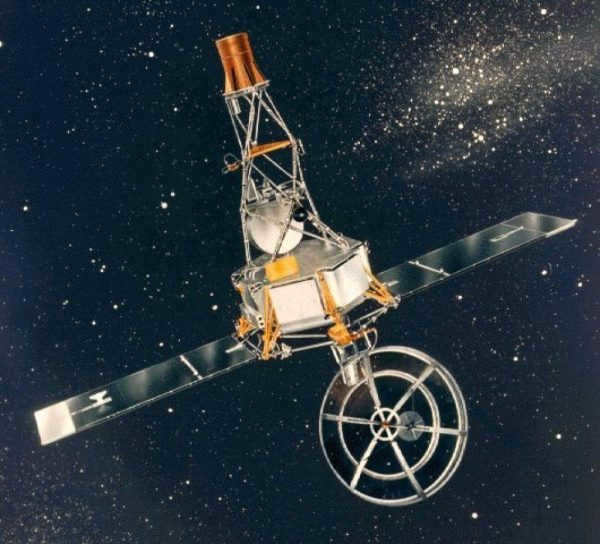
Mariner-1 was an unmanned spacecraft developed by NASA in the early 1960s. It was intended to conduct a flyby of Venus, but a software error caused the spacecraft to veer off course shortly after launch and it had to be destroyed. The failure of Mariner-1 was a significant setback for NASA, but it provided valuable lessons for future space missions.
